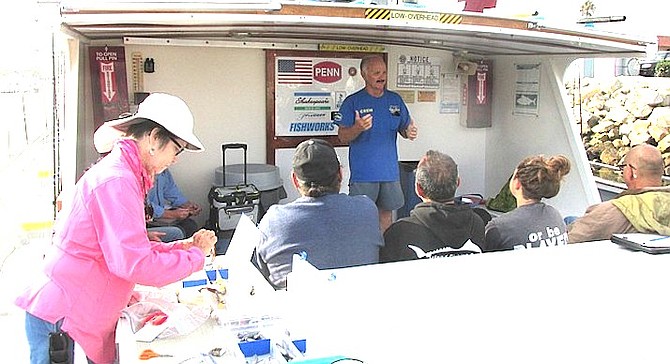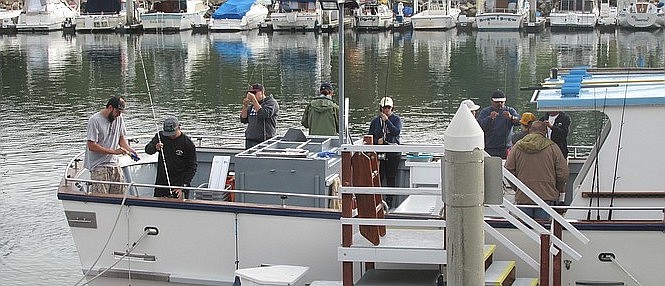 Facebook
Facebook
 X
X
 Instagram
Instagram
 TikTok
TikTok
 Youtube
Youtube

Recreational anglers, along with a scientist from Scripps Institute of Oceanography at UCSD, got to fish where the rest of us can’t — in the Marine Protected Area of Encinitas — a no-take area for commercial, lobster, and recreational fishing.

On the fifth such trip this summer aboard the Sea Star out of Oceanside Harbor, 14 scientists and volunteer anglers took part in the statewide program.
The August 22 trip was part of a required study on the effectiveness of the state’s protected areas. The Encinitas area covers nine square miles, from Moonlight Beach south to Cardiff by the Sea’s Seaside Beach, and out to the three-mile limit. (Surf fishing is still allowed in the Encinitas zone.)
“This is a great opportunity for collection of real data. It will be a controlled exercise that is repeatable,” said Capt. Joe Cacciola of the Sea Star. “In the past, they’ve [the regulatory agencies] have used old science, or speculation, on sportfishing’s impact.”
The group will fish for 15 minutes before moving to a new spot within the restricted area. Divided into three groups, each group will fish with the same bait; either swim baits, shrimp flies, or live bait. All species will be recorded and tagged before being released. If it’s a big fish like a halibut or black sea bass, the deck hands will take a picture instead of trying to bring it onboard. “Its important we cause the least amount of stress to these fish,” said Cacciola.
“Fish continuously,” Cacciola advised the group. “If you get hooked up in the kelp, or break the line, hand it off to a deck hand and grab a back up and get back in the water.”
Locally, UCSD was chosen by the state’s Ocean Protection Council, which funds the study.
Nine anglers that fished continuously for the study on August 22 tagged and released 80 calico bass, 20 barred sand bass, two California sheephead, three ocean whitefish, five brown rockfish, and one 30-inch halibut.


Recreational anglers, along with a scientist from Scripps Institute of Oceanography at UCSD, got to fish where the rest of us can’t — in the Marine Protected Area of Encinitas — a no-take area for commercial, lobster, and recreational fishing.

On the fifth such trip this summer aboard the Sea Star out of Oceanside Harbor, 14 scientists and volunteer anglers took part in the statewide program.
The August 22 trip was part of a required study on the effectiveness of the state’s protected areas. The Encinitas area covers nine square miles, from Moonlight Beach south to Cardiff by the Sea’s Seaside Beach, and out to the three-mile limit. (Surf fishing is still allowed in the Encinitas zone.)
“This is a great opportunity for collection of real data. It will be a controlled exercise that is repeatable,” said Capt. Joe Cacciola of the Sea Star. “In the past, they’ve [the regulatory agencies] have used old science, or speculation, on sportfishing’s impact.”
The group will fish for 15 minutes before moving to a new spot within the restricted area. Divided into three groups, each group will fish with the same bait; either swim baits, shrimp flies, or live bait. All species will be recorded and tagged before being released. If it’s a big fish like a halibut or black sea bass, the deck hands will take a picture instead of trying to bring it onboard. “Its important we cause the least amount of stress to these fish,” said Cacciola.
“Fish continuously,” Cacciola advised the group. “If you get hooked up in the kelp, or break the line, hand it off to a deck hand and grab a back up and get back in the water.”
Locally, UCSD was chosen by the state’s Ocean Protection Council, which funds the study.
Nine anglers that fished continuously for the study on August 22 tagged and released 80 calico bass, 20 barred sand bass, two California sheephead, three ocean whitefish, five brown rockfish, and one 30-inch halibut.
Comments